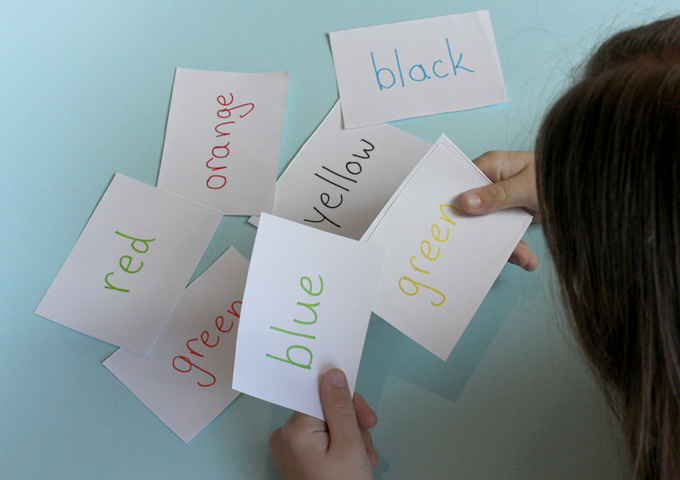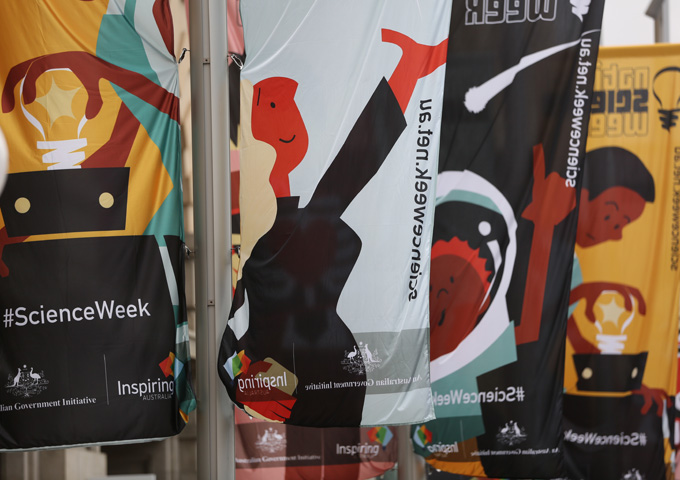
What you need:
- white paper or cardboard
- marker pens in a range of colours, for example: red, blue, yellow, green, orange, purple, and black
What to do:
- Use the white paper or cardboard to make two sets of 10 rectangular flashcards.
- On one set of 10 flashcards, use the marker pens to write the name of each marker colour in the corresponding colour. For example, write the word ‘red’ using a red marker. It is OK to repeat some colours.
- On the second set of 10 flashcards, write the names of the colours in the wrong colour of ink. For example, write the word ‘red’ using a blue marker.
- Challenge someone to flip through the first set of flash-cards and name the colour of the ink used to write each word.
- Repeat using the second set of flashcards with the mismatched ink and word.
What’s happening?
For the first set of flashcards, this task is easy, but for the second set of flashcards it takes a lot of concentration to avoid making mistakes. Someone who is a good reader can read the name of the colour faster than they can name the colour of the ink, so they have to make a conscious effort to name the colour instead of automatically reading the word.
This is known as the ‘Stroop effect’, named after J. Ridley Stroop, who discovered the phenomenon in the 1930s. A number of ‘Stroop tests’ have been developed to test cognitive functions, including attention and processing speed.






